Ancient Lazio (with Rome and Portus) – Latium
by
Abraham Ortelius
Detail
Date of first edition: 1595
Date of this map: 1609
Dimensions (not including margins): 35,5 x 45,5 cm
Condition: excellent. Sharp copper engraving printed on strong paper. Centre fold is as published. Superbly old coloured. Wide margins.
Condition rating: A+
Verso: text in Latin
Map reference: Van der Krogt 7320H:31; Van den Broecke 209; Karrow 1/203
From: Theatrum Orbis Terrarum Abrahahami Ortelii Antwerp. Antwerpen, 1609, J. Vrients. Ban der Krogt 3, 1:054
Price (without VAT, possibly to be added): €800,00 (FYI +/- $888,00 / £712,00)
Unless otherwise specifically stated on this map page, we charge the following expedition costs in euro (unfortunatelly, gone up with Covid, but still too low in reality!):
– Benelux: 40 euro
– Rest of Europe: 60 euro
– Rest of the World: 100 euro
In stock
Related items
-
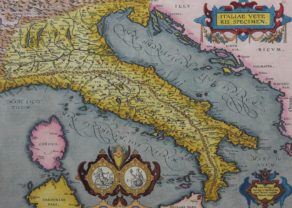
Ancient Italy – Italiae Veteris Specimen
by Abraham OrteliusPrice (without VAT, possibly to be added): €1 000,00 / $1 110,00 / £890,00 -
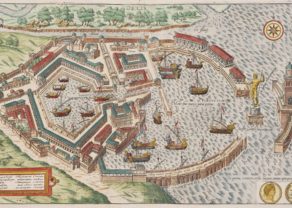
Ancient Portus (near Ostia), Rome’s imperial harbor
by Georg Braun and Frans HogenbergPrice (without VAT, possibly to be added): €775,00 / $860,25 / £689,75Portus, the key Roman port in imperial times
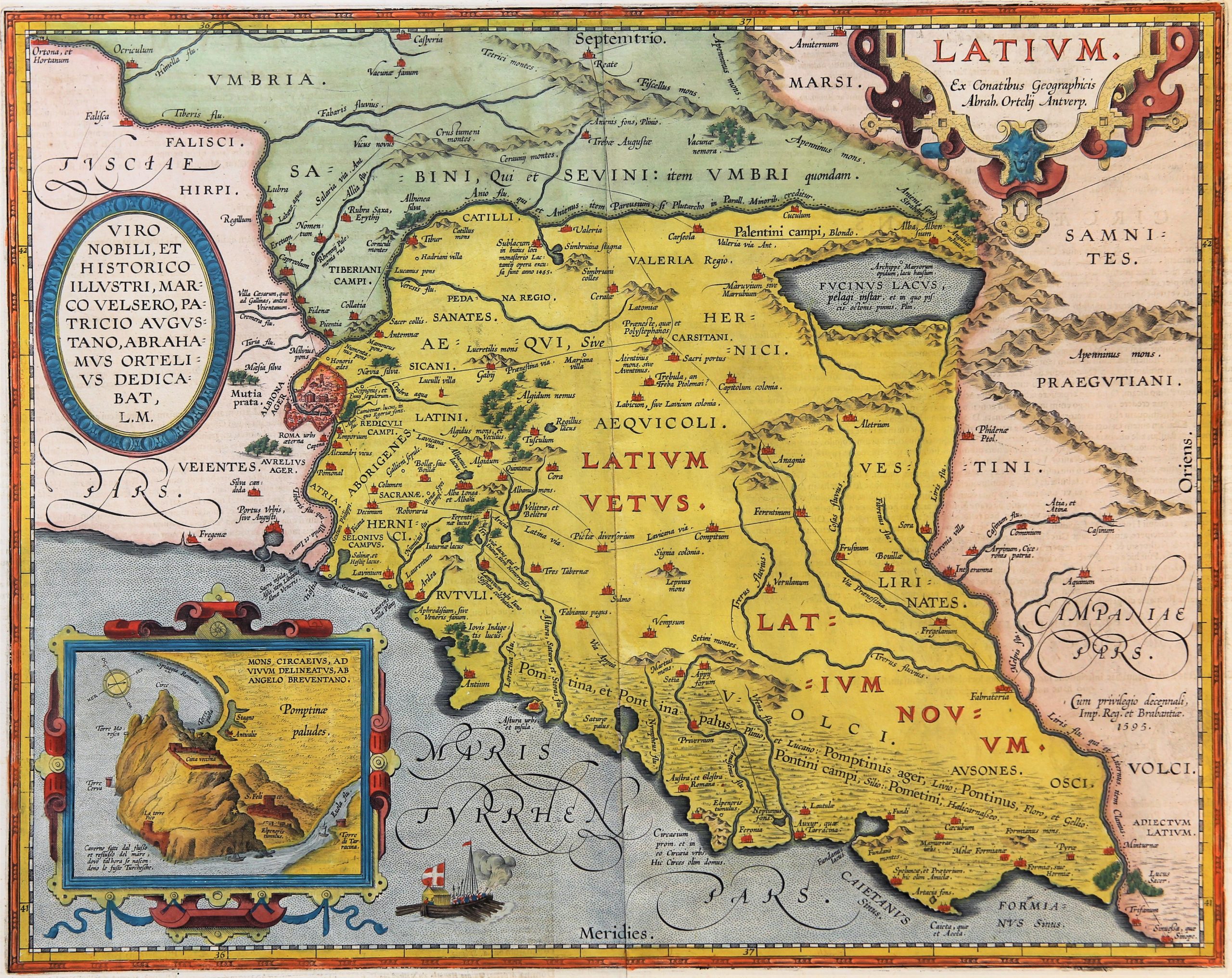
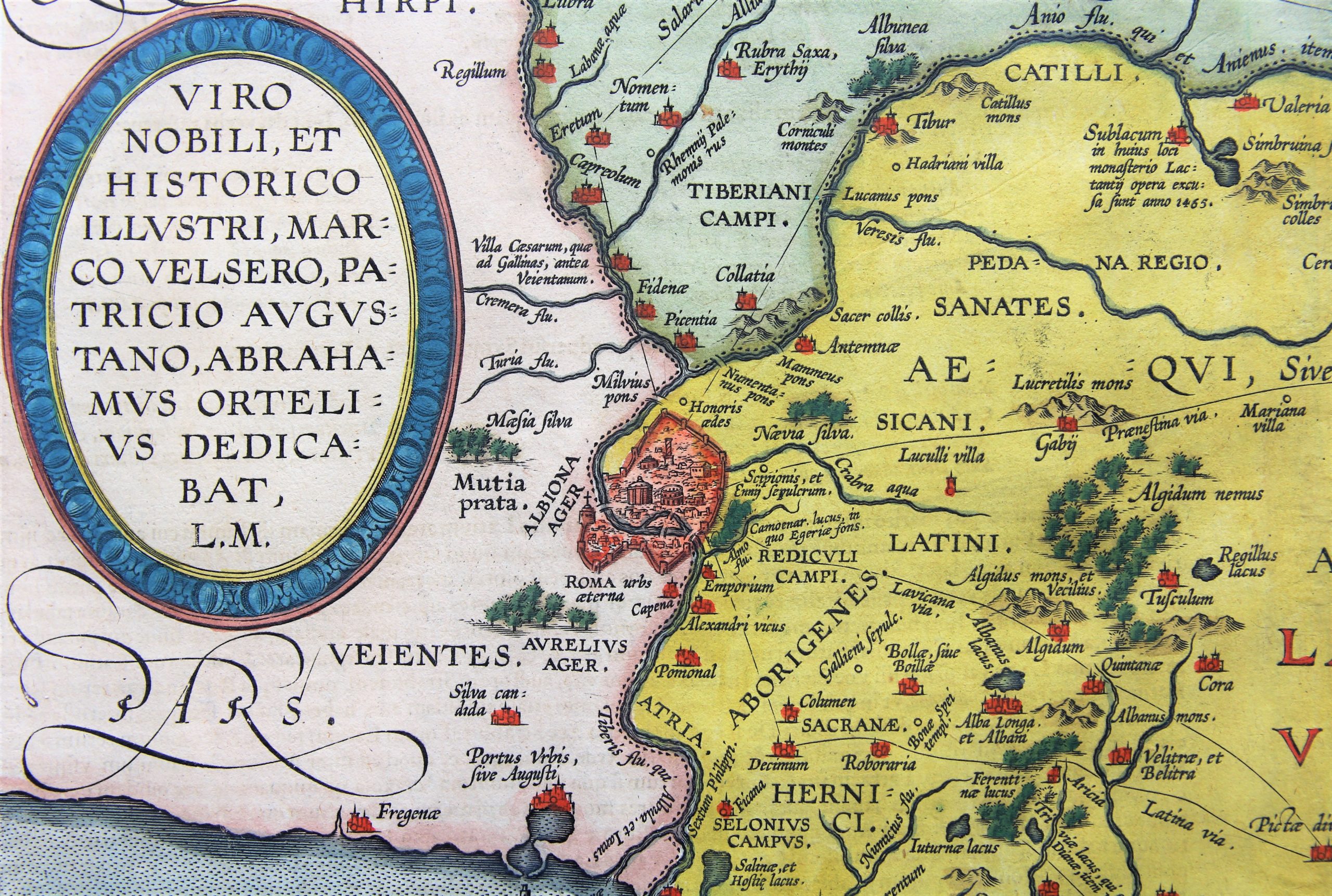
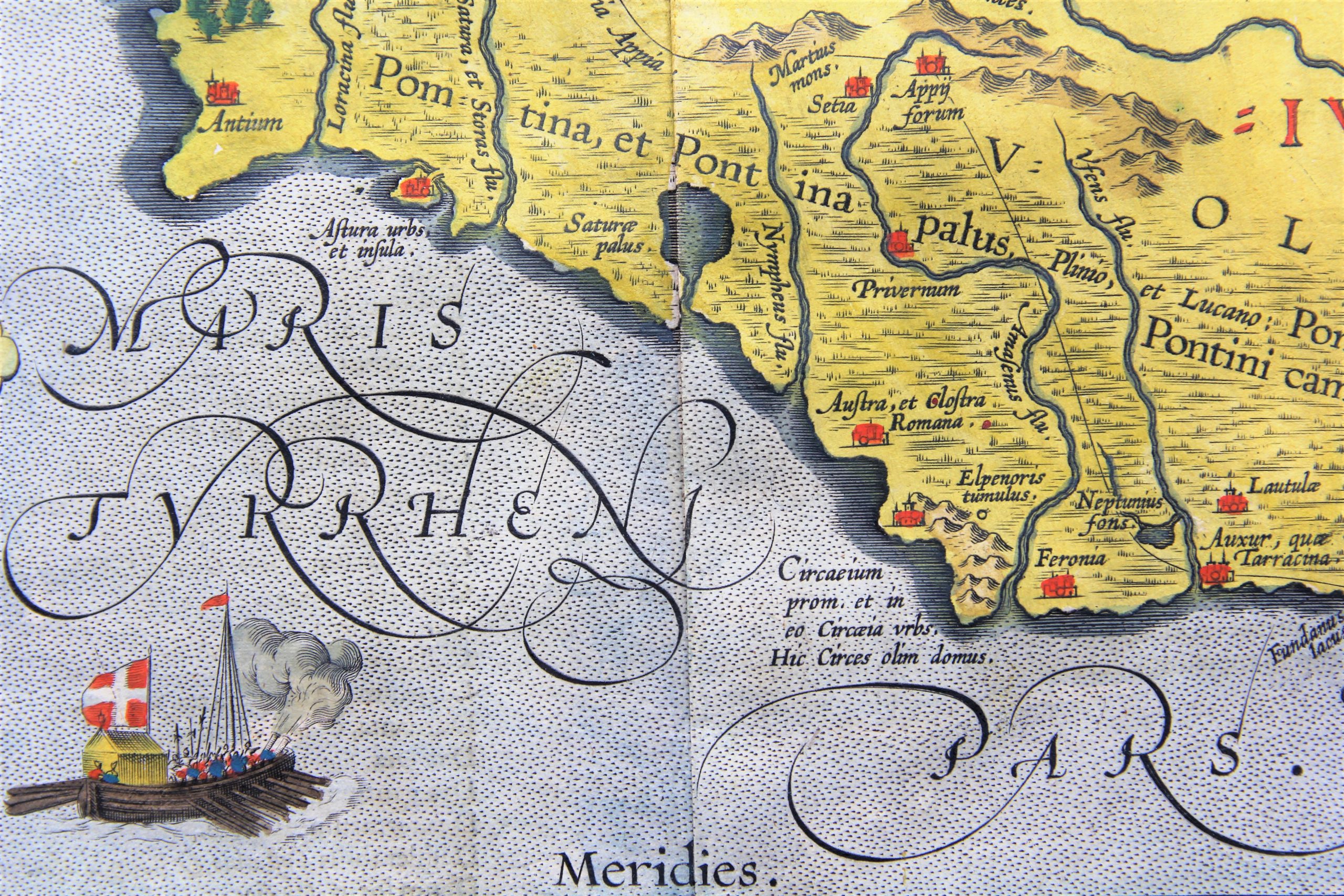
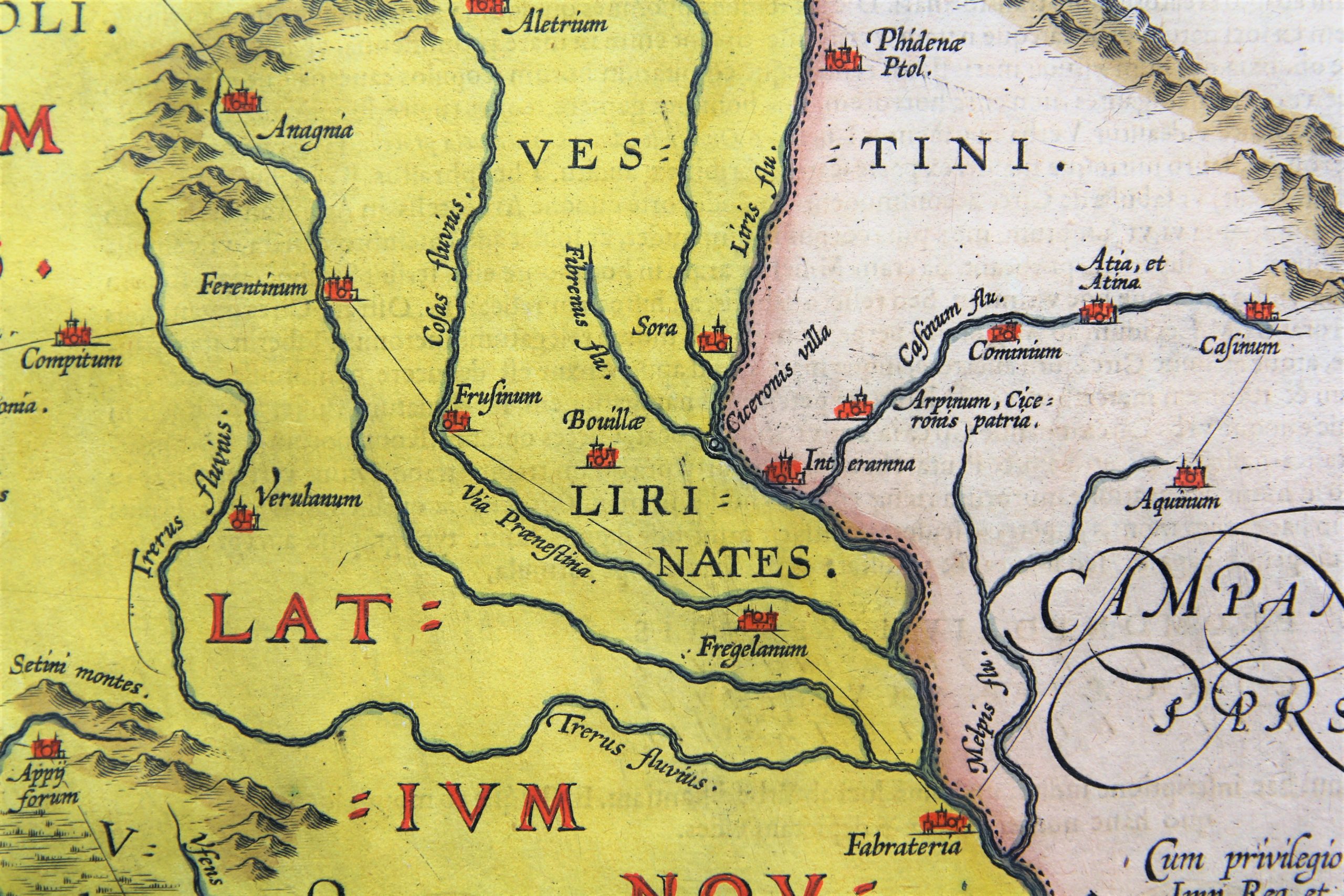
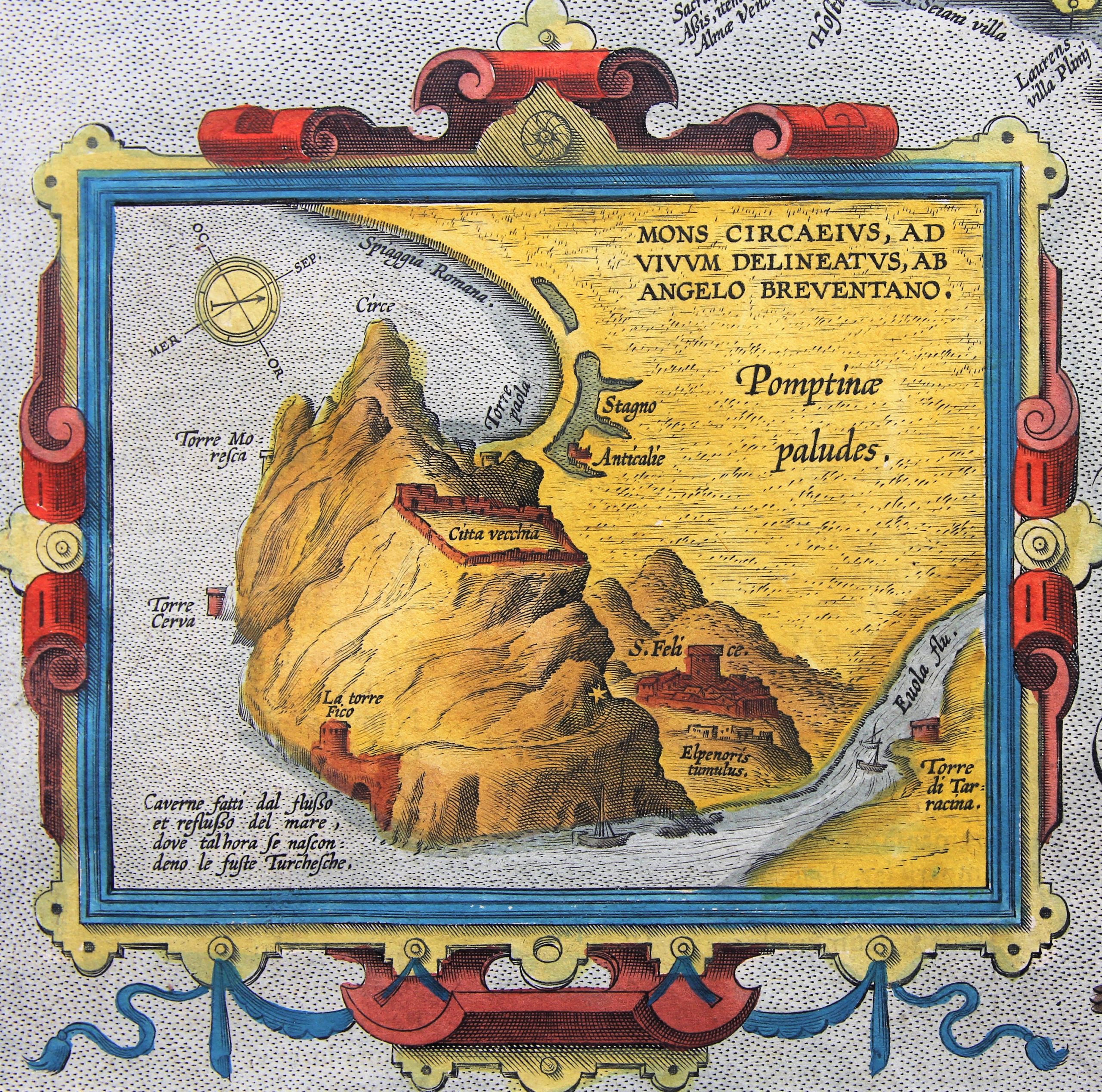
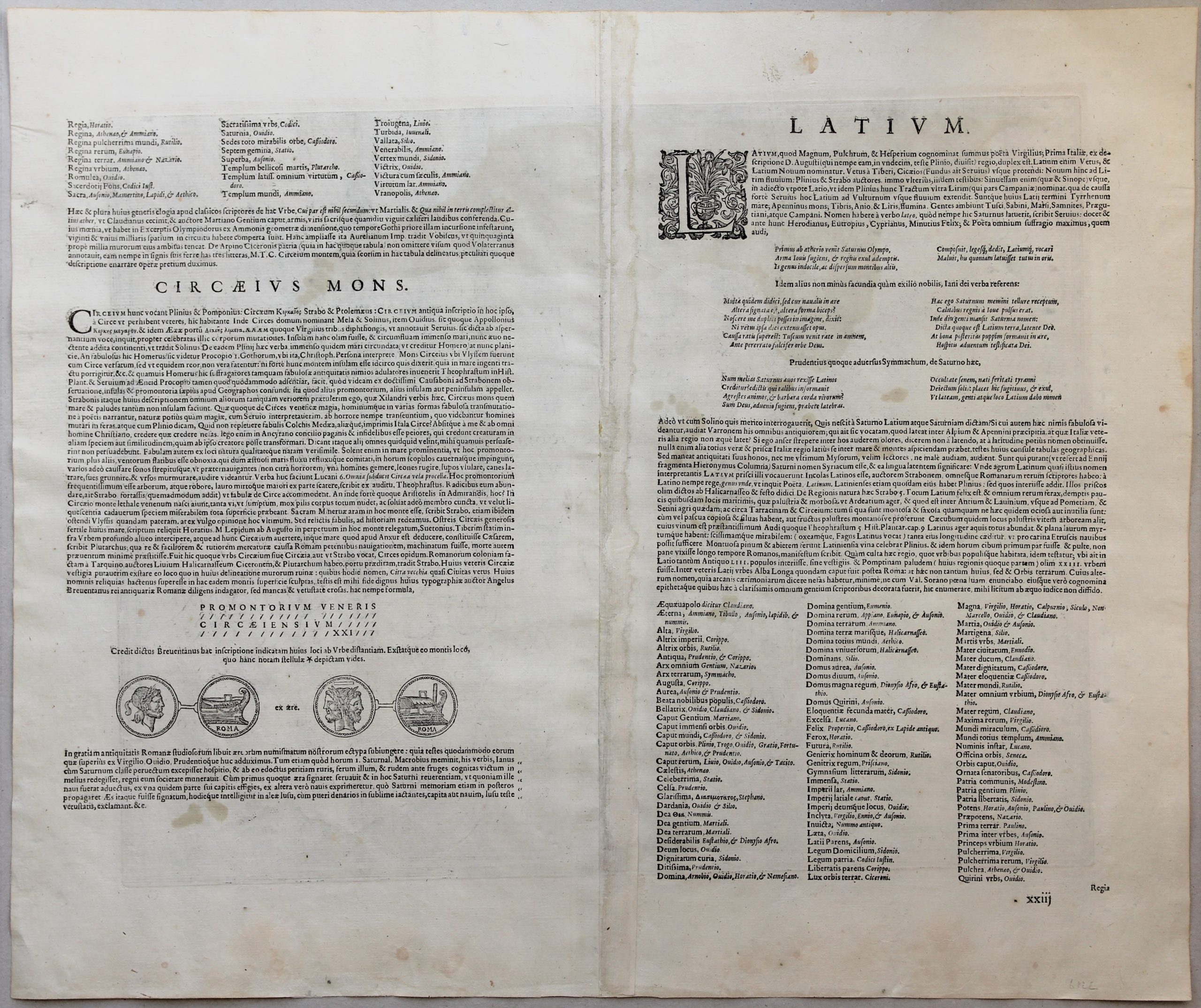
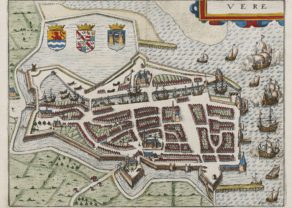
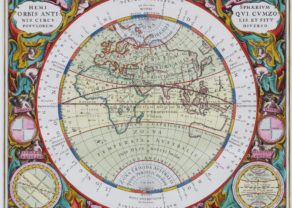
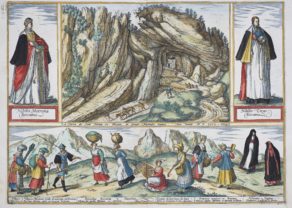
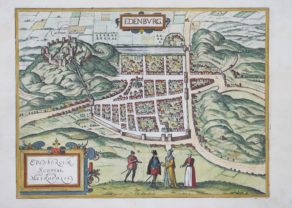
Latium… or some old Roman roads… on a 16th century map
This map of Old Latium was introduced in Ortelius’ Theatrum Orbis Theatrum of 1595. “Roma urbs aeterna” on the Tiber as well as the inner and exterior harbors of Portus are clearly visible. Quite remarkably (for any 16th century map), this map shows several paved roads such as the Via Appia (following the coastline to Brindisi), the Via Salaria to the Adriatic coast (whose origin goes back to its construction by the Sabines to facilitate transportation of salt from mines near Ostia to their villages), the Via Latina (to Capua) and Via Praenestina (to Praeneste). The large Lacus Fucinus (+/- 150 km²) caused for concern due to its regular flooding, since it lacked any natural passage to a sea. The Romans unsuccessfully tried to drain the lake, which would only take place in 1877.
The mythical mount Circeo (at the Gulf of Gaetea) dominates the inset below. According to Homer, Circe, sorceress and daughter of Helios (the Sun God) lived on Aeaea, an island in the Mediterranean Sea. When Odysseus and his sailors and companions unsuspectingly arrived on this island, she enchanted many of them into pigs. The Roma classical writers identified mount Circeo on Cape Circeo as Aeaea. Ortelius pinpoints some hills at the coast with the description “Hic Circes olim domus”. As general sources Ortelius refers to Virgil, Pliny, Varro, Halicarnasseus and others.